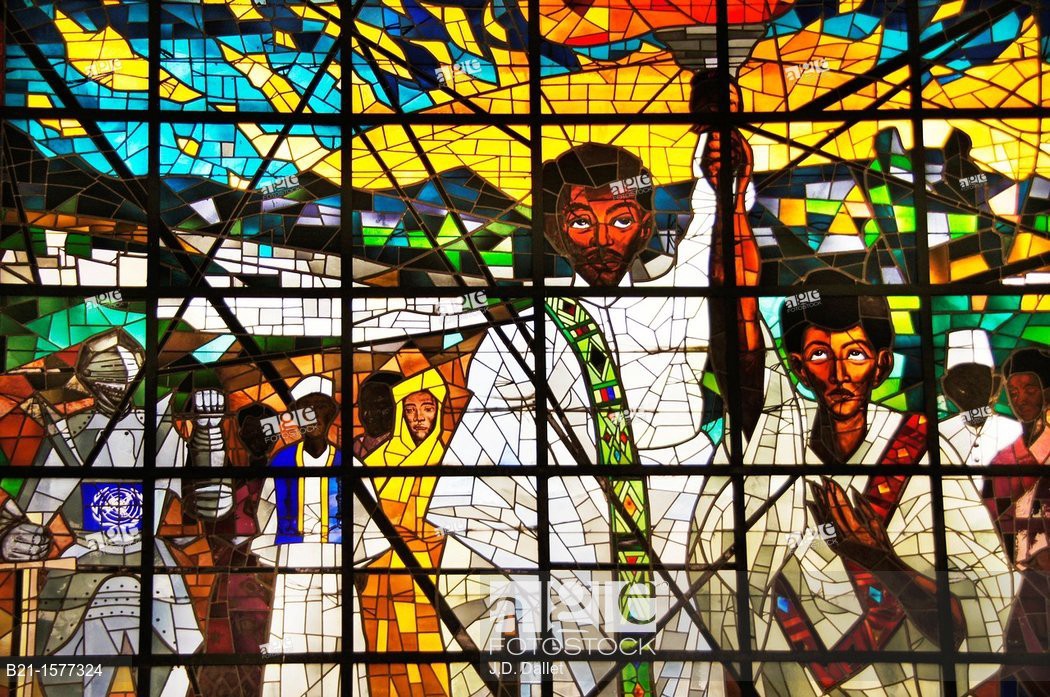African genius of painting: Who is Afewerk Tekle?
Afewerk Tekle has created works that combine Western art and traditional Ethiopian art. In Ethiopia, asking for money was considered a 'shame'. Therefore, instead of money, he bought a living land and personal gifts from the paintings he sold from his first exhibition.

Religion is at the center of life in Ethiopia in both traditional and modern times. There are no other people in African societies that maintain their cultural heritage and religious life in such harmony. In Ethiopia, one of the simplest forms of Christianity, Orthodox Christianity continued to guide society, especially art, even during the communist Deng regime. Especially in the art of painting, the harmony of this art with religion appears more clearly.
In Ethiopia's historical art, dance, traditional, music, the art of Giz writing, icons, and religious images left their mark even in the modern period and continued in harmony with religion. Ethiopia is a country that has given the most products in the art of painting among African countries. It would not be wrong to say that traditional and modern painting art in Africa continues to be influenced by each other in harmony.
Afewerk Tekle, born in 1932 and considered the most important representative of modern painting in Ethiopia, has created works that combine Western art and traditional Ethiopian art. More precisely, he brought a new dimension to traditional Ethiopian painting by using the techniques he learned in Europe.

Even though Tekle was accused of being a state artist by the artists of his time and it was claimed that he produced products in the style desired by the administration, it is not overlooked that he used his brush as a rebel even during the oppressive Deng regime. His paintings show traces of Christianity, Pan-Africanism, and Ethiopian patriotism.
Although it is difficult to say whether the understanding of freedom was effective in Afewerk Tekle's choice, who preferred England instead of France as a state scholarship student, it can be said that the paintings of Rita Pankhurst, who was then a judge in London, were a source of inspiration for his.
Tekle, who opened his first exhibition at a very young age in 1954 in the exhibition hall of the City Council, probably did not expect that much attention. His early works of youth were highly appreciated by the elite group of Addis Ababa, and his paintings were exhibited for more than three months found 8 paintings on the first day of the exhibition. But he did not receive any money for any of his favorite paintings. The lone Emperor Heila Selassie had rewarded him with money. This behavior was already typical of kings, kings would pay whatever they wanted for the things they liked. Because the painting was not made to earn money, in Ethiopia, it was considered a shame to ask for money. Therefore, instead of money, he bought a living land and personal gifts from the paintings he sold from his first exhibition. Also, in the Ethiopian painting tradition, painters did not sign their paintings. Because that work was now considered to have passed into the hands of society, which came out of the hands of the creator.
Although Tekle is seen by some as a painter of a palace or government, he never surrendered his art to the emperor and the government. Even though it is a tradition in Ethiopia, he did not even paint the emperor and did not make any drawings symbolizing the emperor in his masterpieces.
Free Africa is one of Tekle's most important paintings on stained glass. He adapted Ethiopia's traditional yellow, green and white colors to all of Africa. White is the color of freedom and religion, green is the color of fertile Africa, and yellow is the color of struggle and innovation, as well as the flower of Adey. The marigold flower symbolizes the great Cross as well as rebirth and spring.
Freedom has now come to Africa. The outsiders represent Free Africa. The African freedom fighter man in a white dress and green belt is chasing the red bird with the bird in his hand. That bird is colonialism itself. The people in different colors in each crowd represent African countries, while the pregnant woman and child represent the family. Those in the picture are always looking up, this horizon is their future, their freedom, and independence.
Another groundbreaking painting by Tekle is Mother Ethiopia.
Mother Ethiopia is also an indicator of Tekle's superiority in painting. The 1963 painting is depicted with the painting on the Ethiopian flag when Eritrea had not yet separated from Ethiopia. The cotton dress worn by the woman is one of the clothes worn by Ethiopian women, especially on religious occasions. Hand-woven cotton clothing also symbolizes cotton, one of the country's most important agricultural products. The dress is folded and wavy, like the vast mountains and rivers of Ethiopia. Blue is also a symbol of peace and tranquility in Ethiopia. The compassion in the woman's look at the child shows this peace. The child who sleeps quietly and calmly, Hz. He is not Jesus, He is the future of Ethiopia.
Tekle's other notable paintings are Masquerade Flower. He depicted the Masquerade Flower as a queen, following the footsteps of the Queen of Seba, Belkıs.
Among Tekle's masterpieces are his paintings such as Afarlı Genç and the map of Africa.
Perhaps what makes Tekle different is the meaning it gives to his paintings. Compared to his contemporaries, his paintings include not being separated from society, being in harmony with religion, peace, and freedom with traditional life.
Afewerk Tekle died on April 10, 2012, in Addis Ababa at the age of 80, but he left dozens of works that would influence young African painters. Tekle brought the history and culture of Ethiopia into the picture, showing that even though the imperial and communist regimes came to an end, the Ethiopian always continued on his way by looking to the horizon.
